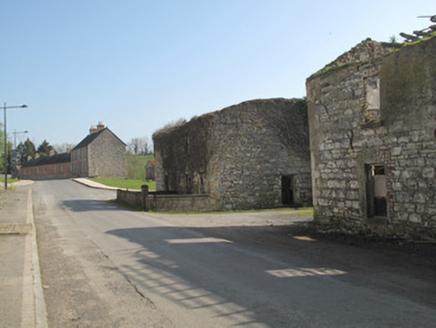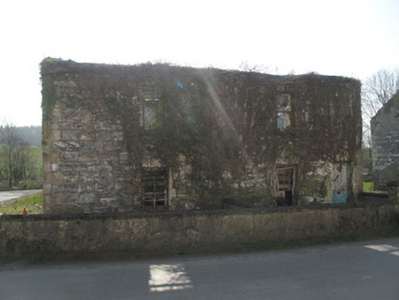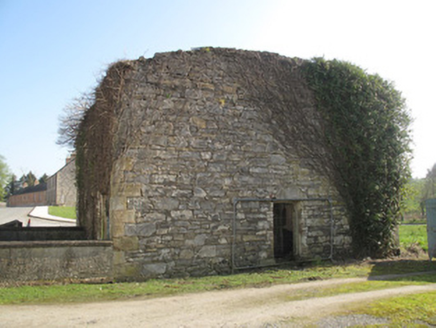Survey Data
Reg No
41400420
Rating
Regional
Categories of Special Interest
Architectural, Social
Original Use
Worker's house
Date
1855 - 1865
Coordinates
270376, 346639
Date Recorded
28/03/2012
Date Updated
--/--/--
Description
Detached three-bay two-storey house, built c.1860. Now derelict and roofless. Some cast-iron rainwater goods remaining. Coursed rubble limestone walls having tooled block-and-start sandstone quoins. Gauged-brick square-headed window openings with red brick surrounds, masonry sills and two-over-two pane timber sliding sash windows. Windows absent to rear (south-east) elevation. Square-headed door opening to front (north-west) having render reveal, timber panelled door having blocked glazed panel. Gauged brick square-headed door openings to north-east and south-west elevations with red-brick surrounds and timber fittings. Pair of square-plan rendered piers having render capping, adjoining rendered wall with render capping to front of house.
Appraisal
This house may have formerly been two separate houses. It was known as 'The Felt', in reference to its felt roof, which the rounded gables suggest was a barrel-vaulted scissor-trussed 'Portlaw roof' type, named after the village of Portlaw in County Waterford and linked to the architect John Skipton Mulvaney, as well as the Malcomson family. Although unoccupied (March 2012), it retains much of its original form and fabric, with timber sash windows, brick window surrounds and tooled sandstone quoins adding visual interest as well as providing a sense of uniformity with its neighbours. The village of Mullan was built in the nineteenth century to house and serve the needs of the workers of the flax and woollen mill, and in the following century, the boot factory subsequently established there. Mill villages such as this were constructed throughout Ulster during the eighteenth and nineteenth centuries and reflect the strong industrial capabilities of this area. The felt barrel roof now removed from this building further links it to the more well known industrial settlements of Bessbrook in Armagh, Blarney in County Cork, the Ruhr mine settlement in Germany as well as, of course, Portlaw in Waterford.





